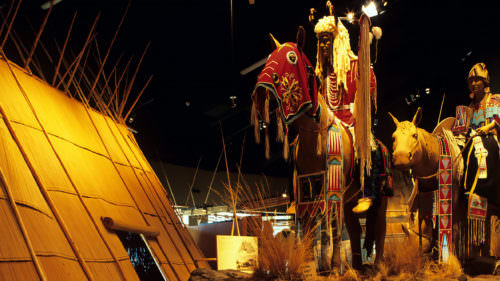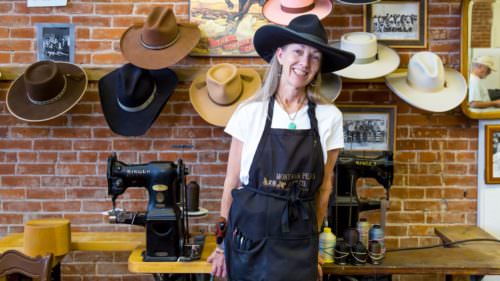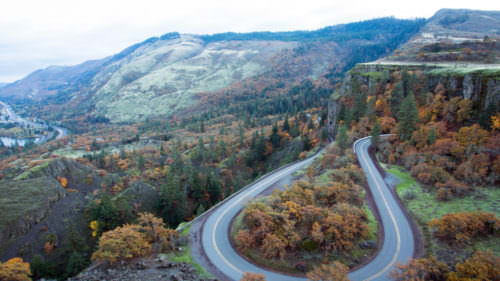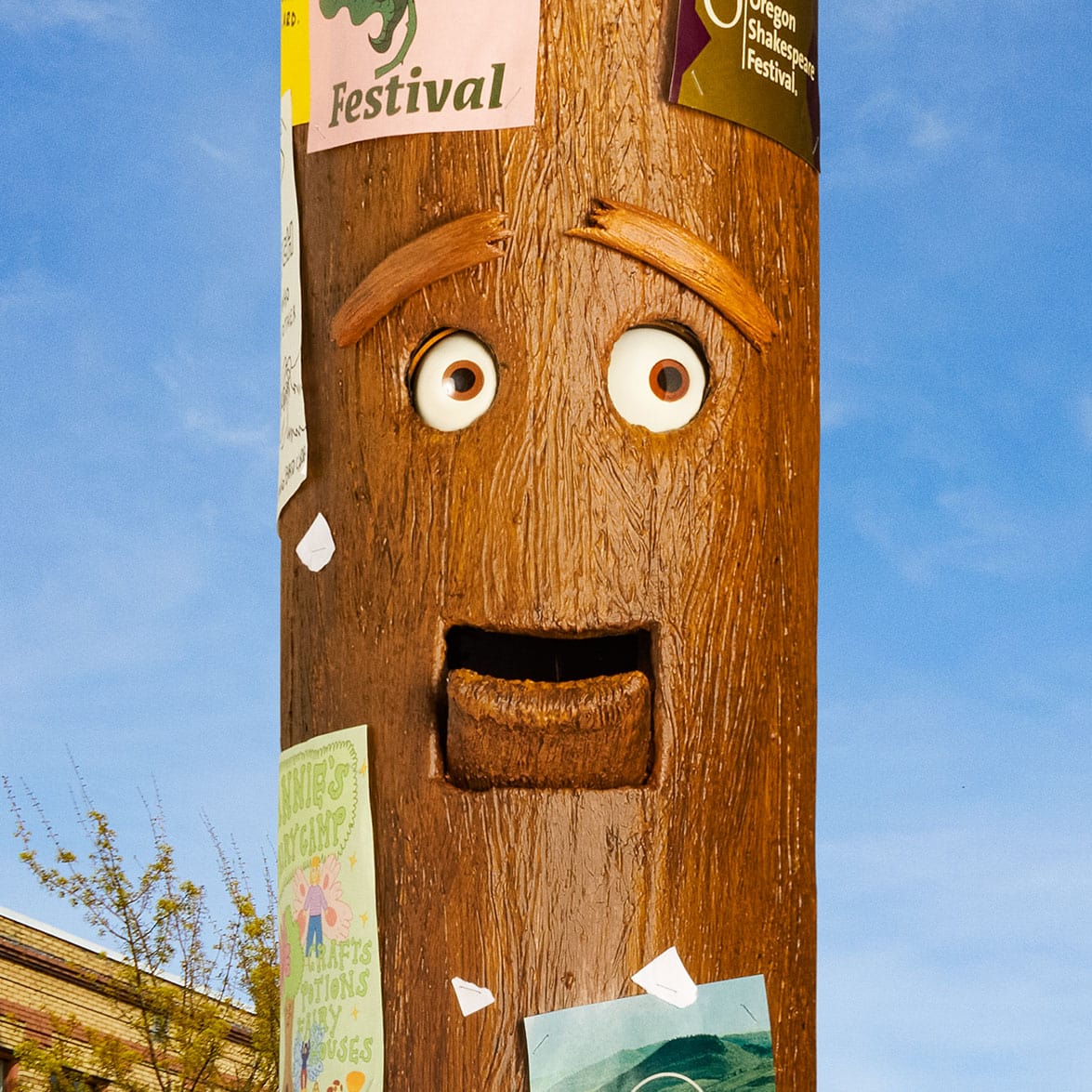For thousands of years before Europeans arrived on the shores of what would become the United States, Native Americans lived and thrived with the land. In what is now Eastern Oregon, rushing waters brimmed with fish and trade centers teemed with tribal travelers. Snow-capped peaks held edible and medicinal roots within their rocky spires. And some of the state’s most iconic vistas were ancestral homes, places of celebration and traditional hunting grounds for tribes across the vast territory.
Tribal history and present-day culture take center stage at the Tamástslikt Cultural Institute, near Pendleton, where more than 10,000 years of traditions, movements and truths of the Cayuse, Umatilla and Walla Walla Tribes are on display. Opened in 1998, the 45,000-square-foot interactive museum not only serves as an educational hub for visitors, but as a gathering place for the tribal community and partners within the region.
Named for the Sahaptin word for “translate,” the Institute offers the Cayuse, Umatilla and Walla Walla tribes the opportunity to share their culture, on their own terms. “For quite a long time, our history was told by others,” says exhibits coordinator Randall Melton. “This is our opportunity to tell our story from our own perspective, in our words and in our tribal languages.” Here are four vital Eastern Oregon landscapes that you’ll see differently with the insights you acquire at Tamástslikt.
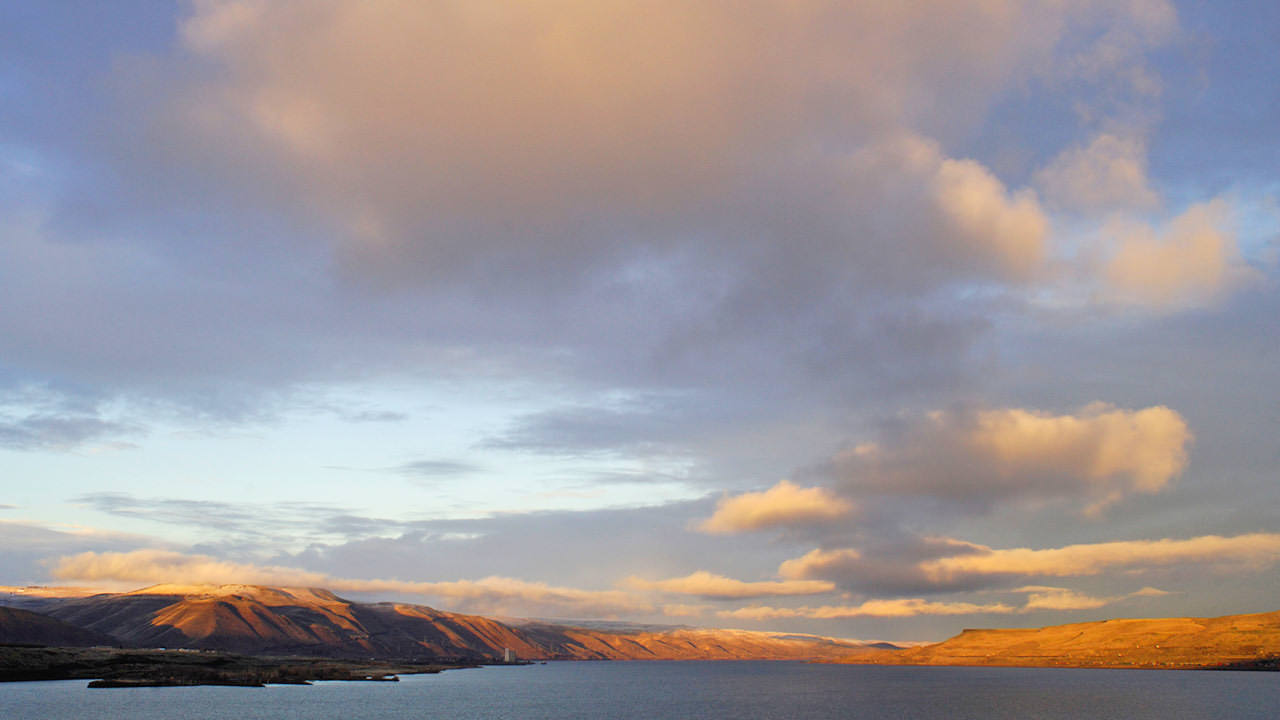
Salmon-rich Columbia River
In the welcoming rotunda, a floor-to-ceiling mural of Celilo Falls reminds visitors that for thousands of years, the salmon-rich waters of the Columbia River were the lifeblood for local and visiting tribes. Before collapsing, these falls, about 12 miles east of The Dalles, were the heart of an expansive trade network for Indian people from all over the West. Tribes as far as Montana and Canada would bring their goods to the falls to trade, fish, gamble and celebrate.
As you meander through Tamástslikt’s “We Were” gallery, immerse yourself in the mural of the pre-dam Columbia River, featuring sand dunes and beaches no longer visible to visitors today. Learn the Coyote story that resulted in the creation of the “Cayuse sisters” — twin basalt towers that still grace the Columbia. See full-sized horses and riders on a basalt outcrop viewing the panoramic plateau, and Cayuse horses grazing on the riverbanks representing the trademark horse culture of the Cayuse people.
As you proceed, view the metal and glass beads, harness leather and minted metal coins on display. These small, seemingly innocuous objects served as harbingers of the new technologies that contact with Europeans would bring.
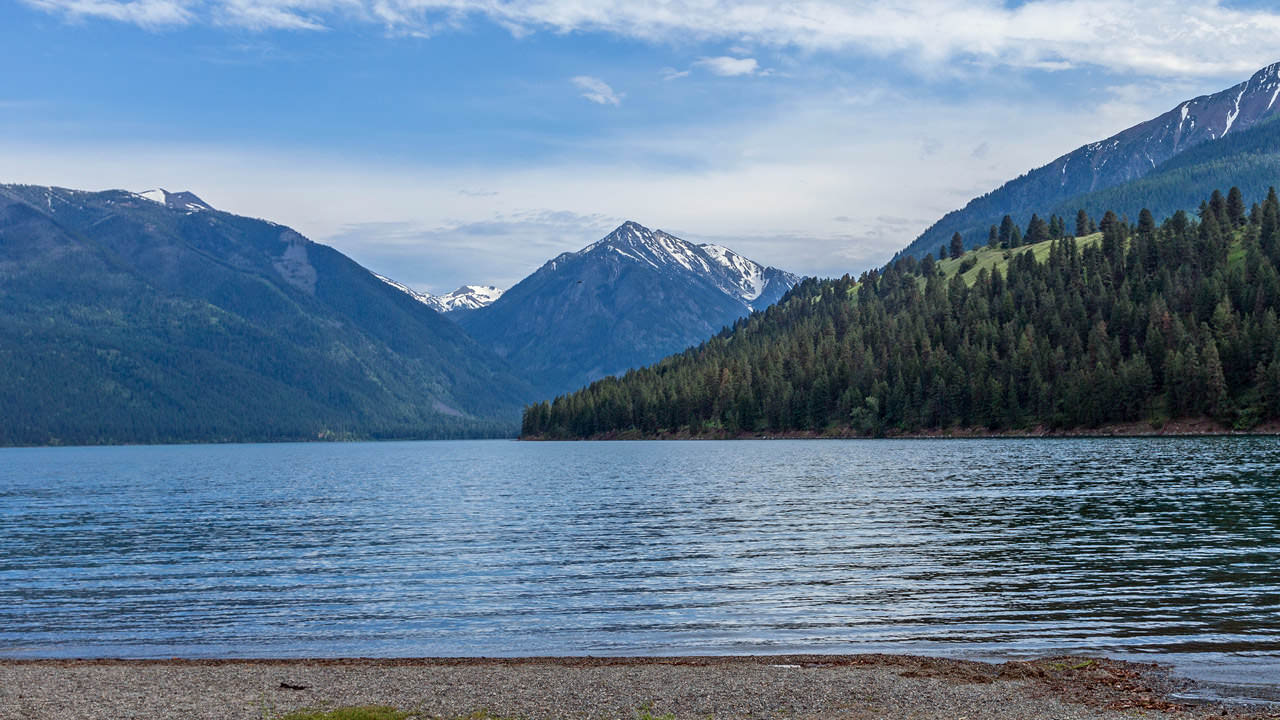
Seasonal camping at Wallowa Lake
For the Cayuse, Umatilla and Walla Walla peoples, Wallowa Lake — as well as the Wallowa mountains and valley — were a seasonal destination to fish, hunt, gather and and camp with the Wallowa band of Nez Perce. At sites around the lake and throughout the county, grazing was particularly fruitful for horse herds and a variety of horseback competitions. Phrases in the Umatilla, Walla Walla and Cayuse-Nez Perce dialects are featured in gallery headers, labels and text throughout the exhibits to give offer a glimpse inside an ages-old culture still alive today.
If you pay close attention, visitors will see how the exhibits highlight the intertwined history between the Cayuse, Umatilla and Walla Walla and their Nez Perce relatives and neighbors. In the 1855 Treaty Council and later in warfare, these tribes have a shared history fighting to retain their culture and homelands.
As you descend the sloped Treaty ramp, hearing the voices of the treaty-makers through speakers as you walk through, it’s a good time to pause and reflect that ancestors of today’s Cayuse, Umatilla and Walla Walla tribes have been welcoming travelers since the explorations of Lewis and Clark. The treaty-makers have been there since the days of trappers and traders, missionaries, Oregon Trail immigrants and today’s visitors arriving via Interstate-84.
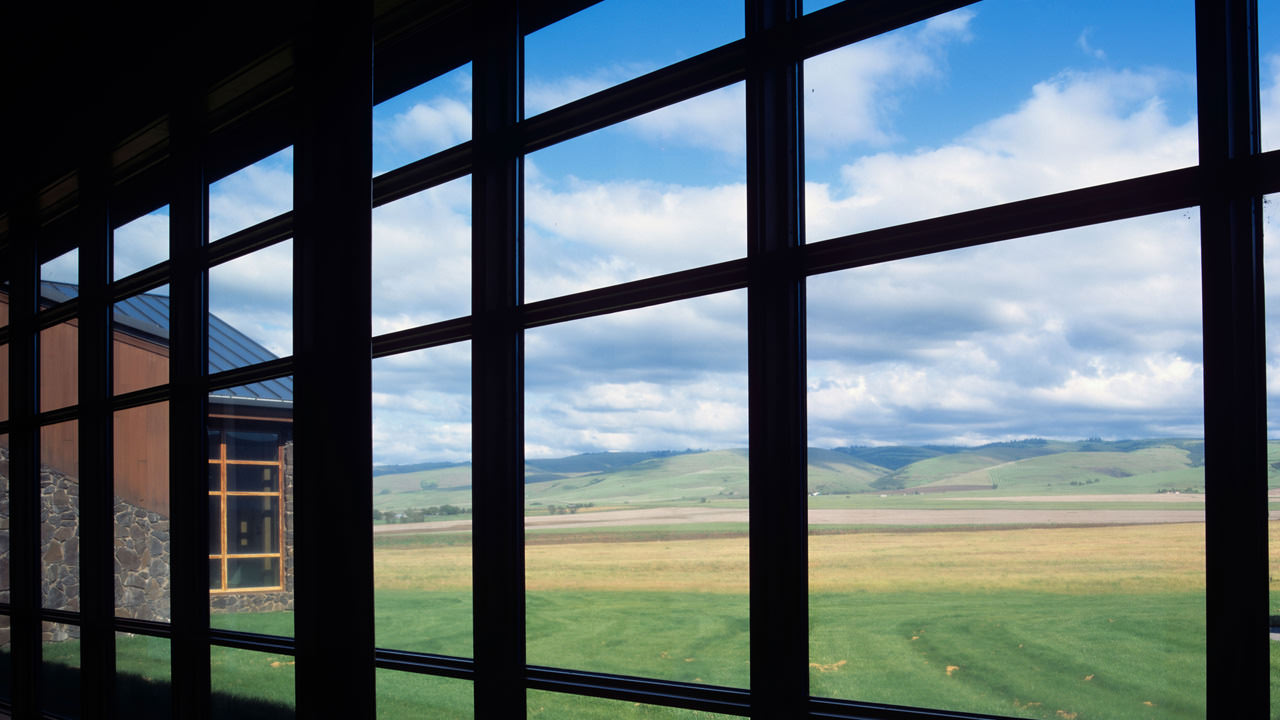
Roots in the Blue Mountains
From the Institute, visitors can spy the foothills and timberline of the majestic Blue Mountains, the heart of this tribal homeland. Inside the seasonal round gallery, you’ll notice a huge variety of flora and fauna that have sustained the tribes for millennia — all dependent on the waters that emanate from the Blues. Admire the ancient art forms, tools and containers handcrafted from nature’s gifts, as ambient sounds of animal life greet you and impart the ancient philosophy of the sustainable life ways that few non-Indians ever learn.
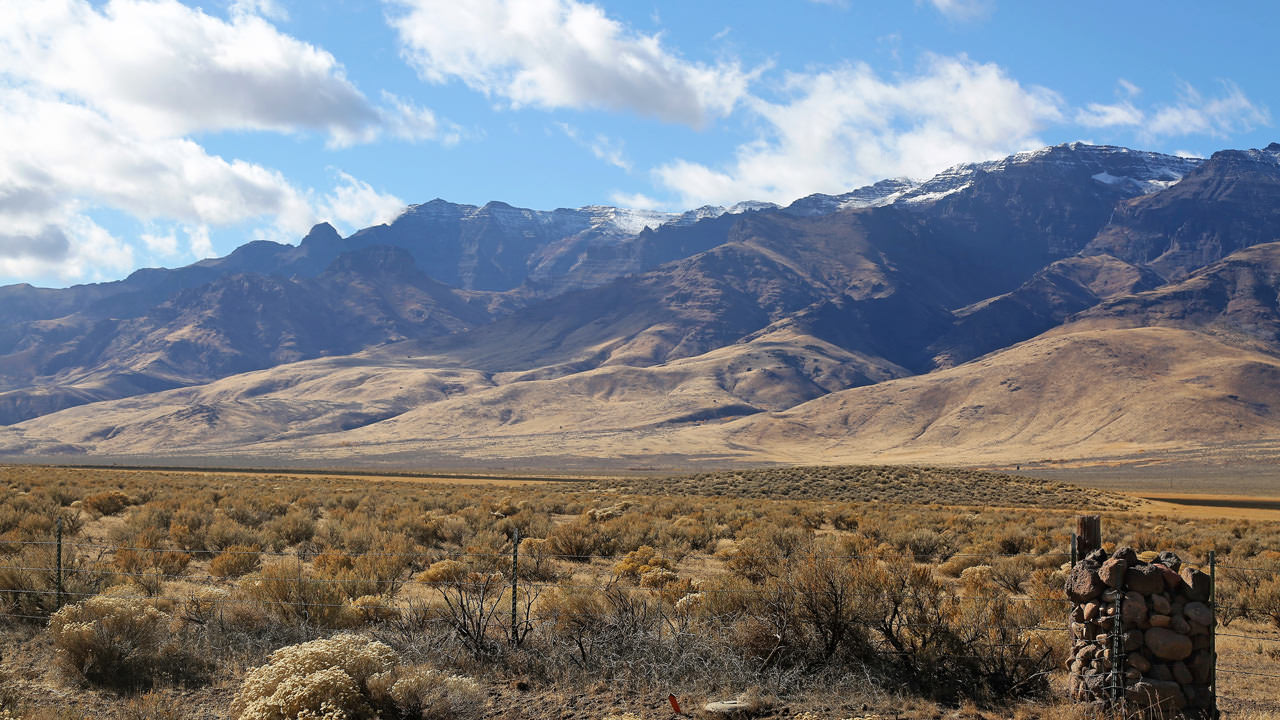
Revolutionizing tribal travel
At the edge of the Cayuse, Umatilla and Walla Walla domain lies the highest point in southeastern Oregon — the majestic Steens Mountain. As told in the “Decline of the Horse” gallery at Tamástslikt, Cayuse headman Ococtuin and his war party traveled near here in the early 1700s when they saw Shoshone men riding a strange animal. The Cayuse changed their aim to peace and gambled to obtain their first mare and stallion, which would revolutionize tribal travel.
At Tamástslikt, look closely at the travel and trade network map, related illustrations and nearby artifacts in order to understand how rich the Steens area was in resources like obsidian, water fowl, roots, fish, and medicine. Later, as you step onto the rough-hewn lumber floor of the horse gallery, visitors will see large historic images that begin to explain how a once-great horse culture and the highest livestock-producing tribe in the United States came to be diminished in wealth and prominence.
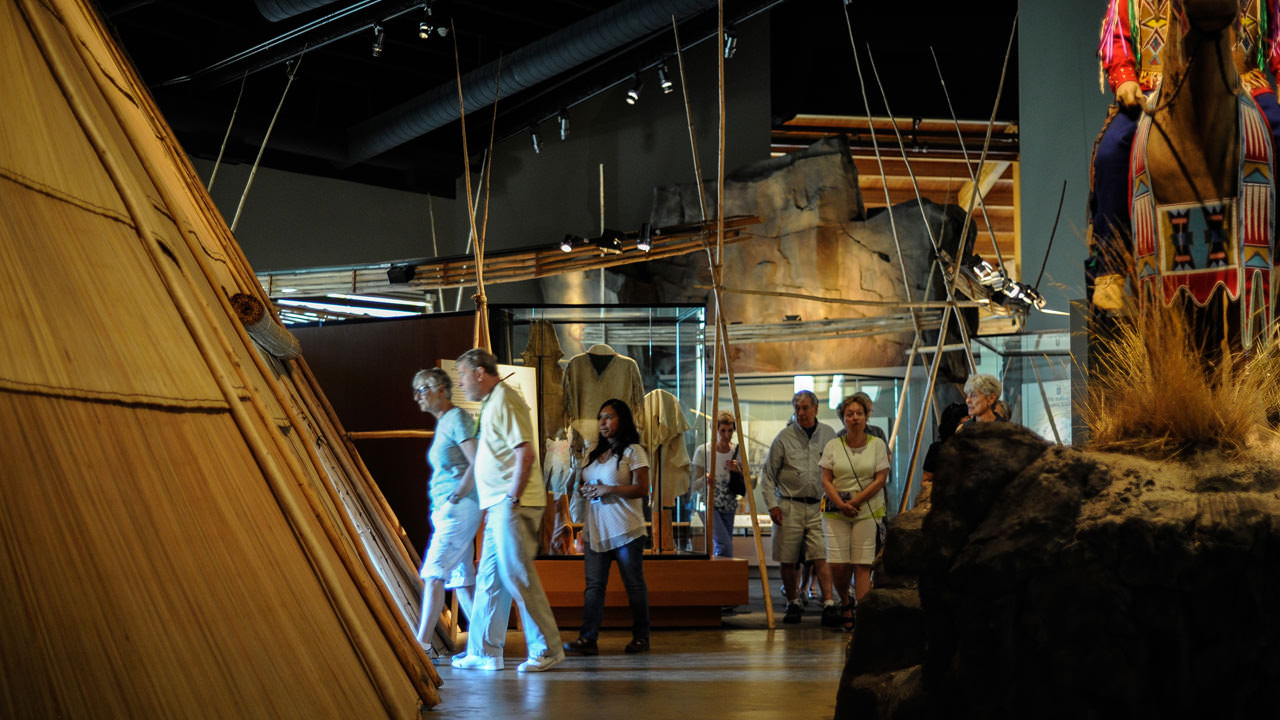
If you go:
Tamástslikt Cultural Institute is located four miles east of downtown Pendleton, next to the Wildhorse Resort & Casino. The museum is open 10 a.m. to 5 p.m. Tuesday to Saturday. The first Friday of every month is free and discounts are available for AAA members, seniors and children 5 and under. Members and active military are admitted free. Check their event listings for the latest exhibits and happenings — from art shows and traveling exhibitions to pow wows, beadworking classes and speaker forums.

